The Northern Plains include what is now North and South Dakota, Eastern Montana, northeastern Wyoming, and the Canadian provinces of Alberta and Saskatchewan. This was an area which was the traditional homelands for the buffalo-hunting peoples, such as the Blackfoot, Assiniboine, Gros Ventre (Atsina), Sioux, Crow, Northern Cheyenne, Plains Chippewa (Ojibwa), and Plains Cree. It was also home to several agricultural Indian nations, such as the Mandan, Hidatsa, and Arikara.
Northern Plains Indian spirituality tended to be different than the spirituality expressed in Christianity. For most of the Christian missionaries—both those of the early contact period and those of today—it was felt that the Indian nations of the Northern Plains either had no religion, or they worshipped Satan. Thus, places associated with Indian spirituality were either ignored or renamed with the designation devil (Devil’s Tower in Wyoming is just one example of this).
Unlike Christianity, the traditional spiritual practices of the Northern Plains Indians were not dogmatic: there was no central religious authority, no requirement of certain beliefs. Northern Plains spirituality was highly individualistic and was a matter of practice rather than being based on “belief” or “faith.”
Spirituality among the Northern Plains tribes tends to be very personal. Writing about the Crow, anthropologist Robert Lowie, in his book Primitive Religion, reports:
“there was no universally acknowledged set of dogmas nor any ecclesiastical organization that handed down laws for the guidance of the religious consciousness. No one insisted that a Crow should believe in the creation myth or subscribe to some accepted concept of the hereafter.”
Religion professor John Grim, in his chapter in Native American Spirituality: A Critical Reader, reports:
“The Crow term for ‘religion,’ alachiwakiia/ ‘one’s own way’ is akin to the translated Crow expression, ‘It’s up to you!’ which suggested that experience and manifestation of the power that enables life is personal yet manifest in the communitarian setting which extends into the biological life of the region.”
As with tribes throughout North America, the tribes of the Northern Plains did not separate their spiritual life from their daily life. The natural world and the supernatural world were not distinct entities but were integrated into the people’s view of the universe. All things were alive—and therefore usually spoken of as “people.” This included the animal-people, the plant-people, and forces such as streams, thunder, wind, sun, rocks, and so on. Writing about the Crow, anthropologist Fred Voget, in his book The Shoshoni-Crow Sun Dance, puts it this way:
“The world thus is made up of ‘persons,’ spiritual and human, who can talk to, influence, cooperate with, and make gifts to each other in mutual exchange and benefit.”
In an article about the Crow in the Plains Anthropologist, Fred Voget reports:
“Throughout their lives, Crow men carried on a dialogue with spiritual patrons who guided their day-to-day decisions with dream instructions and who could be summoned with talismans and songs when danger threatened, or when help was needed in curing or in finding buffalo.”
With regard to the role of animals in Blackfoot spirituality, Dr. Betty Bastien, in her book Blackfoot Ways of Knowing: The Worldview of the Siksikaitsitapi, writes:
“Non-human animals create a consciousness that has different powers than human consciousness. As a result, they mediate a number of transformational powers for humans. Animals are a major source of knowledge because their knowledge of the natural world exceeds that of humans.”
Dr. Bastien also notes:
“Among the Plains cultures, animals not only possess consciousness, but will and soul.”
Harmony and Balance
Christianity, building on the earlier monotheistic foundation of Zoroastrianism, tends to view the world as good and evil, with those things which are not understood being classified as evil (or satanic). American Indians, on the other hand, focused on the concept of harmony or balance.
The Crow warrior Two Leggings said:
“When the Black Robes [Jesuits] came to us they talked about the devil but we could not find him in the things we knew. We think that everything is good and bad and that no person or thing is all good or all bad.”
Balance/harmony is recognized as a general law of the universe and respect is based on this. Blackfoot writer Dr. Betty Bastien writes:
“Striving for balance becomes the motivation of life and the impetus for all relationships.”
This includes relationships with the animal people, the plant people, and the totality of creation.
The Sacred Pipe
Smoking the pipe is a way of making prayers and communications to the spirits visible. The pipe is incorporated into almost all Plains Indian ceremonials. Some pipes are owned or held by individuals, while others are a part of societal or tribal bundles. The pipe symbolized peaceful intent, truthfulness, and mutual obligation.
While most of the northern Plains tribes used pipes with a T-shaped stone bowl, the Crow most frequently used straight tubular stone bowls.
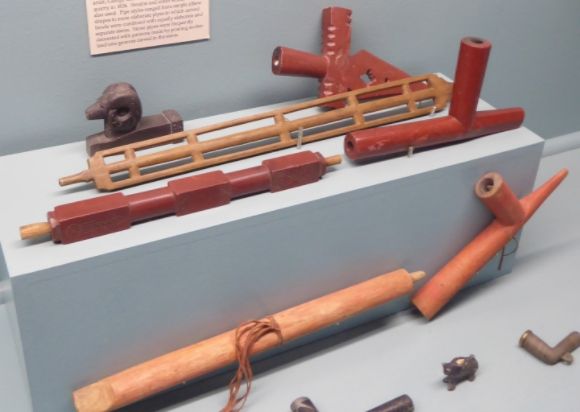 Shown above are some Plains Indian pipes which are on display in the Maryhill Museum of Art in Goldendale, Washington.
Shown above are some Plains Indian pipes which are on display in the Maryhill Museum of Art in Goldendale, Washington.  More pipes displayed in the Maryhill Museum.
More pipes displayed in the Maryhill Museum.  Shown above are some pipes which are on display in the High Desert Museum in Bend, Oregon.
Shown above are some pipes which are on display in the High Desert Museum in Bend, Oregon.
The Sweat Lodge
The physical structure of the sweat lodge is a bowl-shaped wigwam with a frame of bent willows covered by skins (or, in modern times, by blankets). In ceremonial context, the sweat lodge functions to purify the participants. It is a ceremony in its own right and is often a part of other ceremonies. In most of the tribal traditions, the sweat lodge precedes other religious ceremonies as a way of purifying the participants.
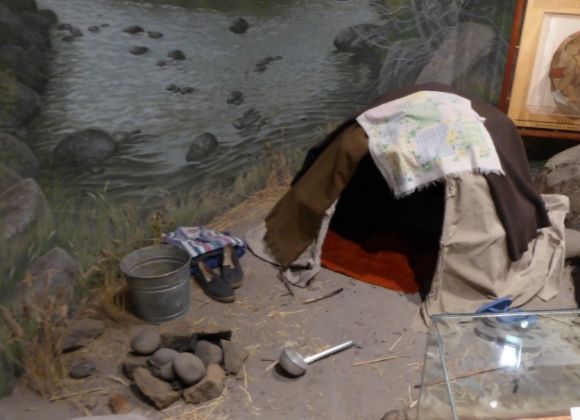 Shown above is a sweat lodge display in the High Desert Museum in Bend, Oregon.
Shown above is a sweat lodge display in the High Desert Museum in Bend, Oregon.
Smudging
The smoke of sage, sweetgrass, and other plants is often used for purification. Smudging makes it possible to see and communicate directly with the spirits. Smudging is a part of almost all spiritual activities. Among the Plains Cree, smudging with sweetgrass (Savastana odorata) is a universal component for all ceremonies. The smoke is a purifying agent, a means of dispelling the everyday atmosphere and substituting a pleasant odor for the spirits.
Dreams and Visions
One important element of the spirituality of the Northern Plains tribes is the vision or dream. It is through dreams that people can obtain spiritual power. Furthermore, dreams can reveal the future. Thus, dreams that tell of success in war, in hunting, or in love bring with them the confidence that good things are going to happen. Dr. Betty Bastien writes:
“The spirit of knowledge often speaks through dreams. They are central to the tribal ways of knowing.”
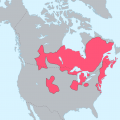
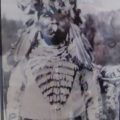

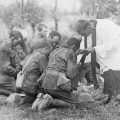
Leave a Reply